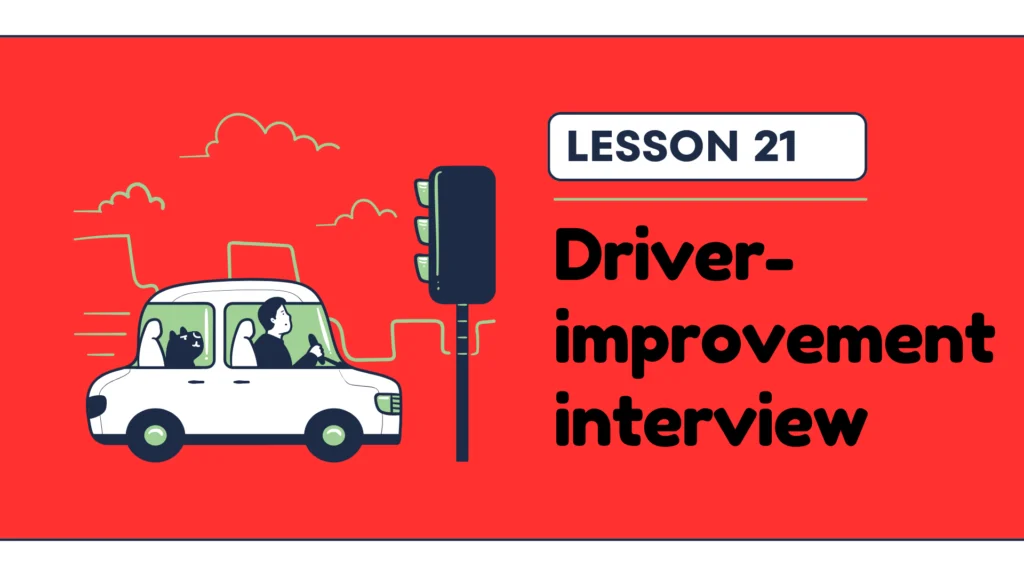Canada places great emphasis on road traffic safety, given its diverse landscape and road conditions. The driver-improvement interviews are a proactive way to improve the skills and knowledge of drivers. This comprehensive process addresses different aspects of driving behaviour, creating a culture of safe and responsible driving. This article will explore the importance of driver-improvement interviewing in Canada. We will examine their structure, their benefits, and their effect on road safety.
I. Overview of the Driver Improvement Interview:
In Canada, driver-improvement interviewing serves a double purpose: identifying areas for improvement in individual drivers as well as contributing to an overall increase in road safety. These interviews do not have a punitive nature but are focused on skill and education development.
Initiating The Process
Driver-improvement interviews may be triggered for a variety of reasons, such as traffic violations, accidents or concerns expressed by other road users. These interviews are often conducted by authorities, such as licensing agencies or law enforcement agencies, to address and assess specific issues regarding a driver’s driving behavior.
II. Structure of driver-improvement interviews:
Interview Format:
Interviews for driver improvement usually involve face-to-face interaction between a driver and an interviewer. These interviews can take place in a designated location, and their structure will vary depending on who is initiating them.
Topics covered:
1. Traffic Laws and Regulations : This interview focuses on the driver’s knowledge and understanding of traffic laws and regulations.
2. Defensive driving techniques: The emphasis is on defensive driving techniques, which promote the ability to anticipate potential hazards and respond effectively to them.
3. Risk Perception: This interview measures the driver’s capacity to recognize and minimize risks while driving, which fosters a greater sense of situational awareness.
4. Examining your driving record can help you identify any patterns or issues that need to be addressed.
III. Driver Improvement Interviews Benefits:
Personalized Learning:
Driver-improvement interviewers provide personalized feedback to drivers on their performance. This personalized approach addresses specific areas of concern and tailors the educational resources to suit drivers’ needs.
Safety Awareness:
Drivers who participate in an interview for driver improvement are encouraged to reflect on their driving habits and behaviors. This increased awareness leads to a safer driving culture.
Recidivism Reduced:
According to studies, individuals who have driver improvement interviews are less likely to commit traffic offenses or engage in risky driving behavior in the future. These interviews are educational in nature, which is a key factor in reducing recidivism.
IV. Critiques and Challenges
Some critics claim that the time, personnel and resources required to conduct a driver-improvement interview are significant. Authorities face a difficult task in balancing the costs and benefits.
Effectiveness Assessment:
It is difficult to measure the effectiveness of driver improvement interviews over time. It is important to continue evaluating the effectiveness of driver-improvement interviews in determining whether participants have maintained improved driving behaviors over time and whether they are able to improve road safety.
V. Technology and its role:
Integration of technology:
The advancement of technology has enabled the integration into driver improvement programs of tools like driving simulators and virtual reality. These technologies allow drivers to improve their skills and practice in a realistic environment.
Online Education Platforms
Online platforms are being used more and more for driver-improvement courses. Interactive modules, virtual classrooms and quizzes make education more flexible and accessible for participants.
VI. Analysis:
Comparative Analysis
The best way to improve driver performance in Canada is by learning from international experiences. The Canadian driver’s improvement interviews can be improved by learning from international experience.
Global Trends for Road Safety
Understanding how other countries address driver behavior, such as through interviews, contributes to an informed and comprehensive approach.

Conclusion:
In Canada, driver-improvement interviews play an important role in forming a culture of safer and more responsible driving. These interviews reduce traffic violations and accidents by addressing drivers’ behavior through personalized feedback and education. In an age of technological advancement, the integration of innovative tools in driver improvement programs can enhance their effectiveness. The ongoing evaluation and improvement of these programs is crucial to maintaining and improving road safety standards across Canada and beyond.
